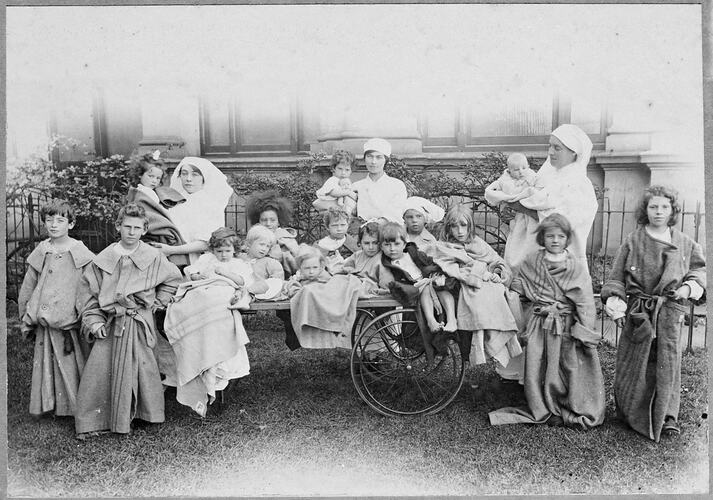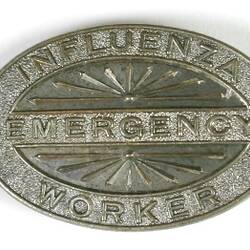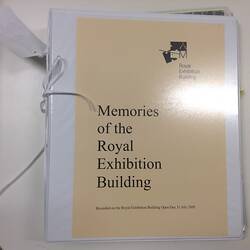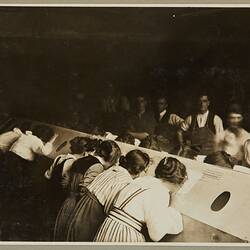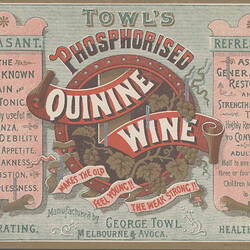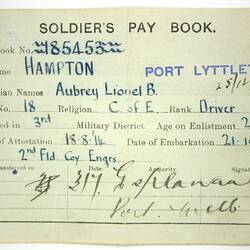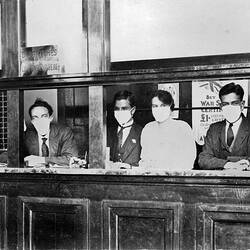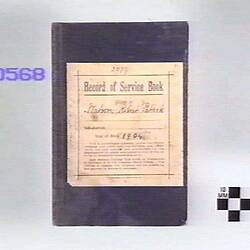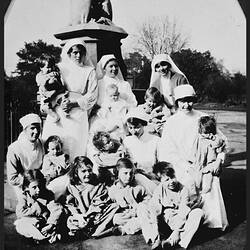Throughout human history, influenza viruses have been circulating and evolving. Influenza types A, B and C cause illness in humans. Influenza A viruses are negative strand RNA viruses that sometimes become novel strains, which can lead to pandemics. It is still not well understood how some novel influenza viruses emerge as pandemic strains, how they cause disease and why some strains are more virulent.
The main natural reservoir of influenza viruses is believed to be wild waterfowl, with pigs as an intermediary species since they can be infected with both avian and human virus strains. Humans can also be infected directly with avian influenza virus strains, and outbreaks have been recorded in poultry handlers.
Outbreaks of influenza in 19th century Victoria included 1847, 1860-61 and an epidemic in 1885. In early 1890 the 'Russian flu', which had been spreading the world since 1889 (probably an H3 sub-type) reached Australia's shores, and was spreading rapidly in Melbourne by late March 1890, causing widespread fear and increased mortality.
In late January 1919 the dreaded 'Spanish flu' was first reported in Melbourne. By the end of that year tens of thousands had fallen ill and nearly 2500 people had died - the highest death rate for a communicable disease in Victoria's history. Some researchers have suggested that previous bouts of influenza, such as the Russian flu or outbreaks before World War I, may have had a protective effect, as the Spanish flu had a significant impact on younger adults without prior exposure to similar influenza viruses.
Pandemic influenza viruses emerged in Victoria twice more in the 20th century: 'Asian' influenza (H2N2), 1957-59 and 'Hong Kong' influenza (H3N2), 1968. Many victims of the 'Asian' flu were children. They included Brian Trinnick, a student at Thornbury State School in Melbourne in 1959. He never finished Grade 3. Mementoes of his brief life are held in Museums Victoria's collection.
Other influenza viruses have spread internationally but not directly impacted Victoria have included H5N1 viruses, 1997-2004; swine flu (H1N1), 2009-10; and avian flu (H5N1).
Bibliography
J. K. Taubenberger, 2006. 'The Origin and Virulence of the 1918 'Spanish' Influenza Virus'. Proc Am Philos Soc. 2006 Mar; 150(1): 86-112. https://www.ncbi.nlm.nih.gov/pmc/articles/PMC2720273/
S.L. Knobler, A. Mack and A. Mahmoud A, ed., 2005. 'The Threat of Pandemic Influenza: Are We Ready?' Institute of Medicine (US) Forum on Microbial Threats, Washington (DC): National Academies Press (US).
'Types of Influenza Viruses', Centre for Disease Control and Prevention, https://www.cdc.gov/flu/about/viruses/types.htm, accessed 19/5/2020.
J. McCalman, 'Diseases and Epidemics', Encyclopedia of Melbourne, http://www.emelbourne.net.au/biogs/EM00473b.htm, accessed 19/5/20.
1860 'LATEST INTELLIGENCE.', Bendigo Advertiser (Vic. : 1855 - 1918), 25 July, p. 2. , viewed 19 May 2020, http://nla.gov.au/nla.news-article87945374.
More Information
-
Keywords
Acquired Immune Deficiency Syndrome (AIDS), Healthcare & Medicine, Hospitals, Infectious Diseases, Medical Institutions, Medical Research, Polio (Poliomyelitis), Sexually Transmitted Diseases (STDs), Influenza, Influenza Epidemic, 1919
-
Localities
-
Authors
-
Article types
